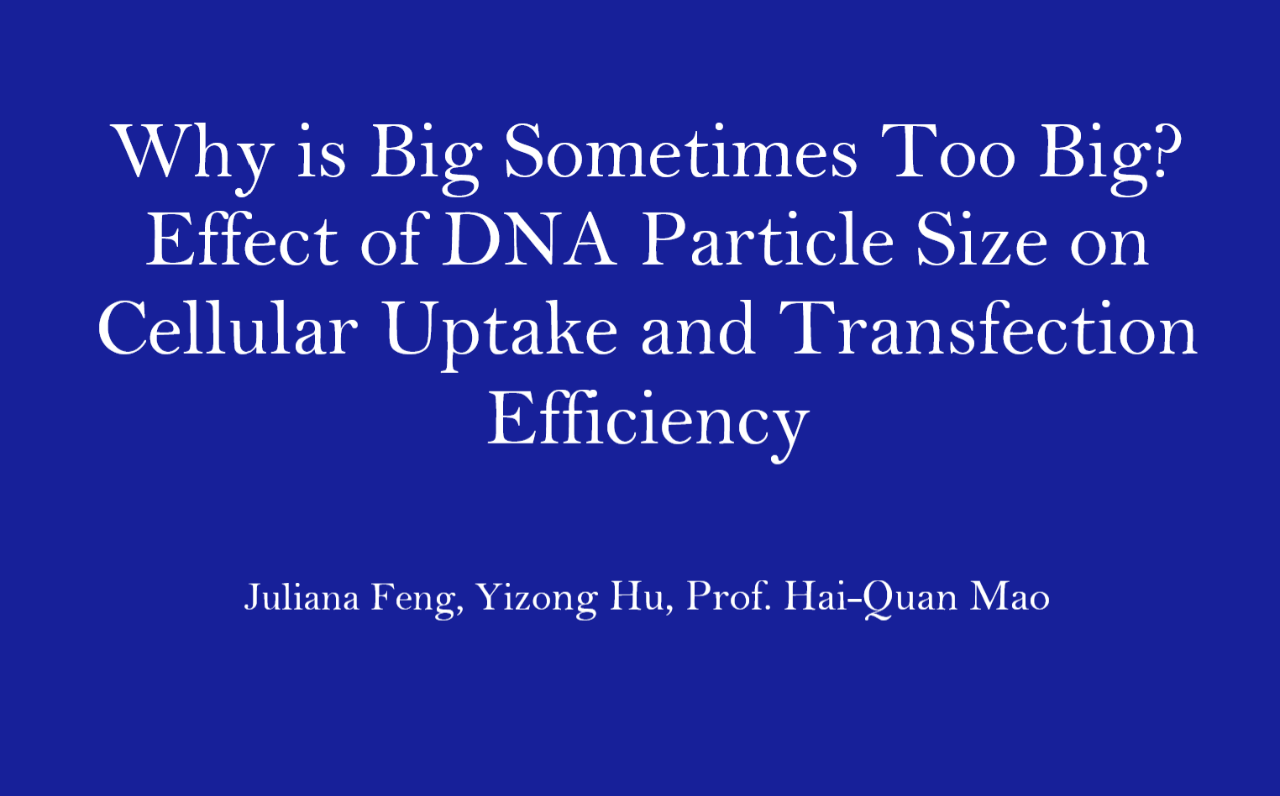Why is Big Sometimes Too Big? Effect of DNA Particle Size on Cellular Uptake and Transfection Efficiency
Team: Juliana Feng
- Program: Materials Science and Engineering
- Course:
Project Description:
Gene therapy has the potential to revolutionize the treatment and outcomes of patients with genetic disease. Most of the currently developed gene therapy products are viral vector-based; thus, as more of these products have entered large-scale clinical trials and the market, there has been an increased impetus on viral vector manufacturing to improve their standards of scalability and reproducibility. In particular, one of the most common ways to manufacture these vectors is via transient transfection of mammalian cells with DNA particles.
The Mao lab has recently identified that DNA particle size strongly influences transfection efficiency, and has developed a novel method to synthesize size-controlled DNA-poly(ethyleneimine) (PEI) particles between 40 and 1000 nm. This led to the identification of 400-500 nm as the optimal DNA-PEI particle size for transient transfection of HEK293 cells for lentiviral vector synthesis.
It is currently unclear why particles sized at 400-500 nm lead to highest transfection efficiency, whereas particles any bigger in size are less efficient. In this project, I assessed how cellular uptake may play a role in answering this question.



